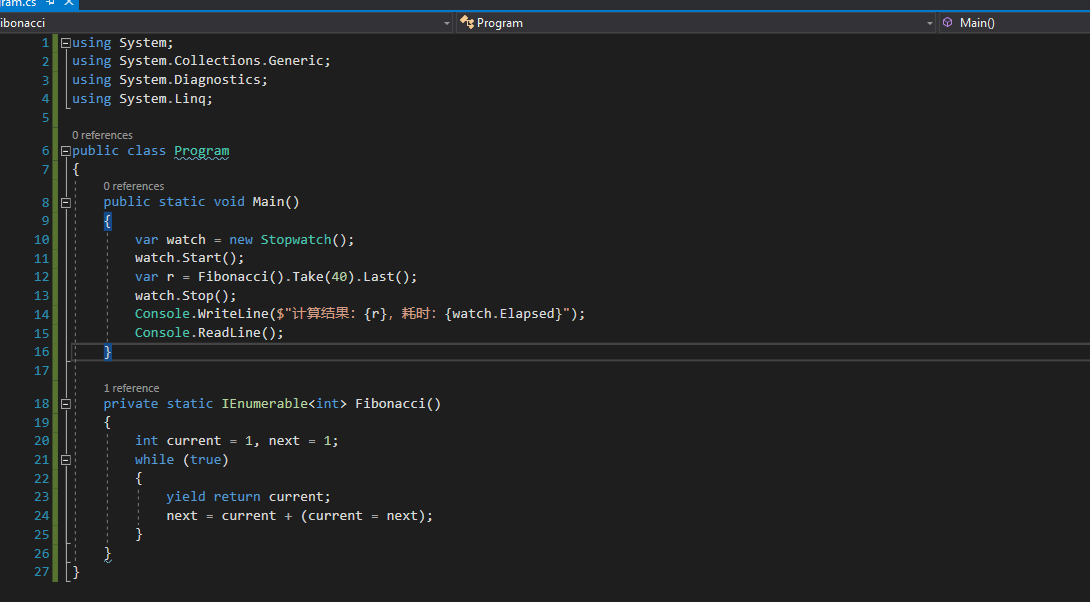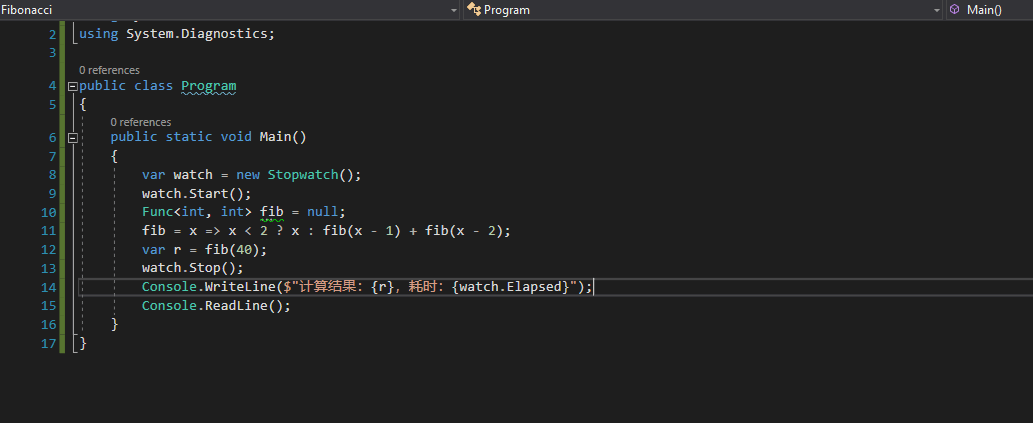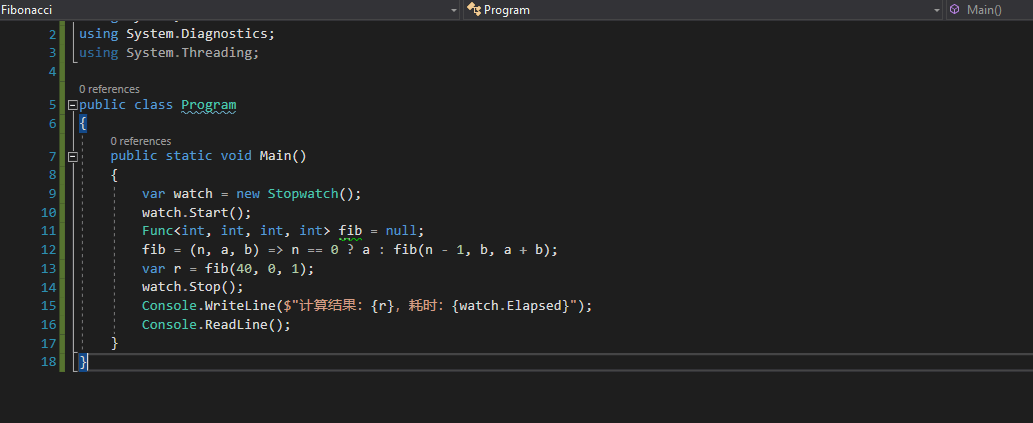求斐波那契数列第n位的几种实现方式及性能对比(c#语言)
在每一种编程语言里,斐波那契数列的计算方式都是一个经典的话题。它可能有很多种计算方式,例如:递归、迭代、数学公式。哪种算法最容易理解,哪种算法是性能最好的呢?
这里给大家分享一下我对它的研究和总结:下面是几种常见的代码实现方式,以及各自的优缺点、性能对比。
Iteration
using System;
using System.Collections.Generic;
using System.Diagnostics;
using System.Linq;
public class Program
{
public static void Main()
{
var watch = new Stopwatch();
watch.Start();
var r = Fibonacci().Take(40).Last();
watch.Stop();
Console.WriteLine($"计算结果:{r},耗时:{watch.Elapsed}");
Console.ReadLine();
}
private static IEnumerable<int> Fibonacci()
{
int current = 1, next = 1;
while (true)
{
yield return current;
next = current + (current = next);
}
}
}

计算结果:102334155,耗时:00:00:00.0029930
Recursion
using System;
using System.Diagnostics;
public class Program
{
public static void Main()
{
var watch = new Stopwatch();
watch.Start();
Func<int, int> fib = null;
fib = x => x < 2 ? x : fib(x - 1) + fib(x - 2);
var r = fib(40);
watch.Stop();
Console.WriteLine($"计算结果:{r},耗时:{watch.Elapsed}");
Console.ReadLine();
}
}

计算结果:102334155,耗时:00:00:00.7022325
Tail Recursion
using System;
using System.Diagnostics;
using System.Threading;
public class Program
{
public static void Main()
{
var watch = new Stopwatch();
watch.Start();
Func<int, int, int, int> fib = null;
fib = (n, a, b) => n == 0 ? a : fib(n - 1, b, a + b);
var r = fib(40, 0, 1);
watch.Stop();
Console.WriteLine($"计算结果:{r},耗时:{watch.Elapsed}");
Console.ReadLine();
}
}

计算结果:102334155,耗时:00:00:00.0001280
这几种实现方式总结:
- 迭代
代码逻辑清晰,容易理解,性能中等。
- 递归
代码最为简洁,逻辑最清晰,最容易理解,性能最差。
- 尾递归
性能最好,代码逻辑稍微复杂。
由此可见,不同的算法对程序的性能影响是十分巨大的,甚至是上千倍以上的差距。





 浙公网安备 33010602011771号
浙公网安备 33010602011771号